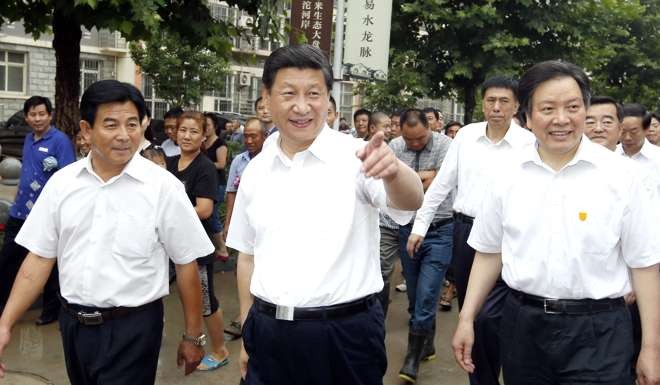
Five ways for a changing China to change the way it looks at cadres
Winston Mok says stiff rivalry among local officials has pushed economic growth, but has also led to over-capacity, pollution and indebtedness, and a different yardstick may be the answer

Communist Party elite tipped to back new rules to keep cadres loyal
China aims to transition to innovation-driven growth, to be shaped by market forces and the rule of law. In order to realign cadres’ behaviour with the new growth strategy, carrots as much as sticks are needed. Discipline without incentives leads to inaction. Beyond tightening party discipline, we need a fundamental review of how cadres’ performance is measured. The following factors should be considered:
● From short-term to long-term orientation. Unlike the long-term orientation of technocrats in Korea and Singapore, China’s local cadres focus on the short term. They are measured on GDP growth from year to year, and are rotated frequently. Such policies make them less accountable. They drive short-term GDP growth relentlessly even at the cost of value destruction and social discontent. Local cadres’ evaluation should be reoriented so that they will pursue long- term sustainable development.
Chinese think tank raises alarm over ‘poisonous’ debt, with no quick fixes in sight
● From indiscriminate to quality growth. Many local cadres have pursued growth at all costs, resulting in high pollution and high indebtedness. Costs are sometimes externalised to society or the future. When the ends justify the means, cadres can resort to unscrupulous tactics, such as colluding with enterprises on lax pollution control. The measurement of GDP growth should be quality-adjusted. For example, gross domestic product achieved at the expense of pollution should be deflated. Likewise for debt-fuelled growth.
China’s cadres may face ‘stricter’ rules in revamp of Communist Party’s code of conduct
● From competition to collaborative coordination. Cadre evaluation has been based on a system of tournaments – with winners and losers in a ranked order. While cadres have been super-charged by such competition to drive growth, they have also developed a beggar-thy-neighbour mentality – resulting in uncoordinated duplication of investments. Group performance can take on greater weight. For example, Beijing’s mayor may be partially measured on the collective performance of Greater Beijing. This will give Beijing greater incentives to lend a helping hand to its neighbours in Tianjin (天津) and Hebei ( 河北 ) – leading to greater win-win collaboration.

Widely different local economic growth rates pose new challenges for China’s policymakers
● From one-size-fits-all to differentiated. Divergent local circumstances make some regions more capable of achieving growth than others. A one-size-fits-all approach causes distortion and forces some regions to be predatory on its people. In Guangdong, cadres’ measurements are differentiated by regions according to development status, priorities and objectives. Such a system should be adopted to reflect the varieties of local circumstances – so as to achieve more balanced “scientific development”.
● From business development to people-oriented development. China’s local governments have focused on business development at the expense of delivering public goods. As they do not contribute to short-term economic growth, key public services such as health care and education often take a back seat. The transition to service-oriented governments must start with revamping cadres’ evaluations from excessive focus on economic growth. Cost-effective delivery of quality public services should become a key measure. Based on independent surveys conducted by professional third parties, unpopular local officials not serving local needs may be replaced by their superiors.
Local cadres have played a key role in shaping China’s economy. However, they often focus on business development to the neglect or even detriment of people’s interests. Thus, their incentives must be realigned with the interests of the nation and the people.
Winston Mok, formerly a private equity investor, is a private investor

